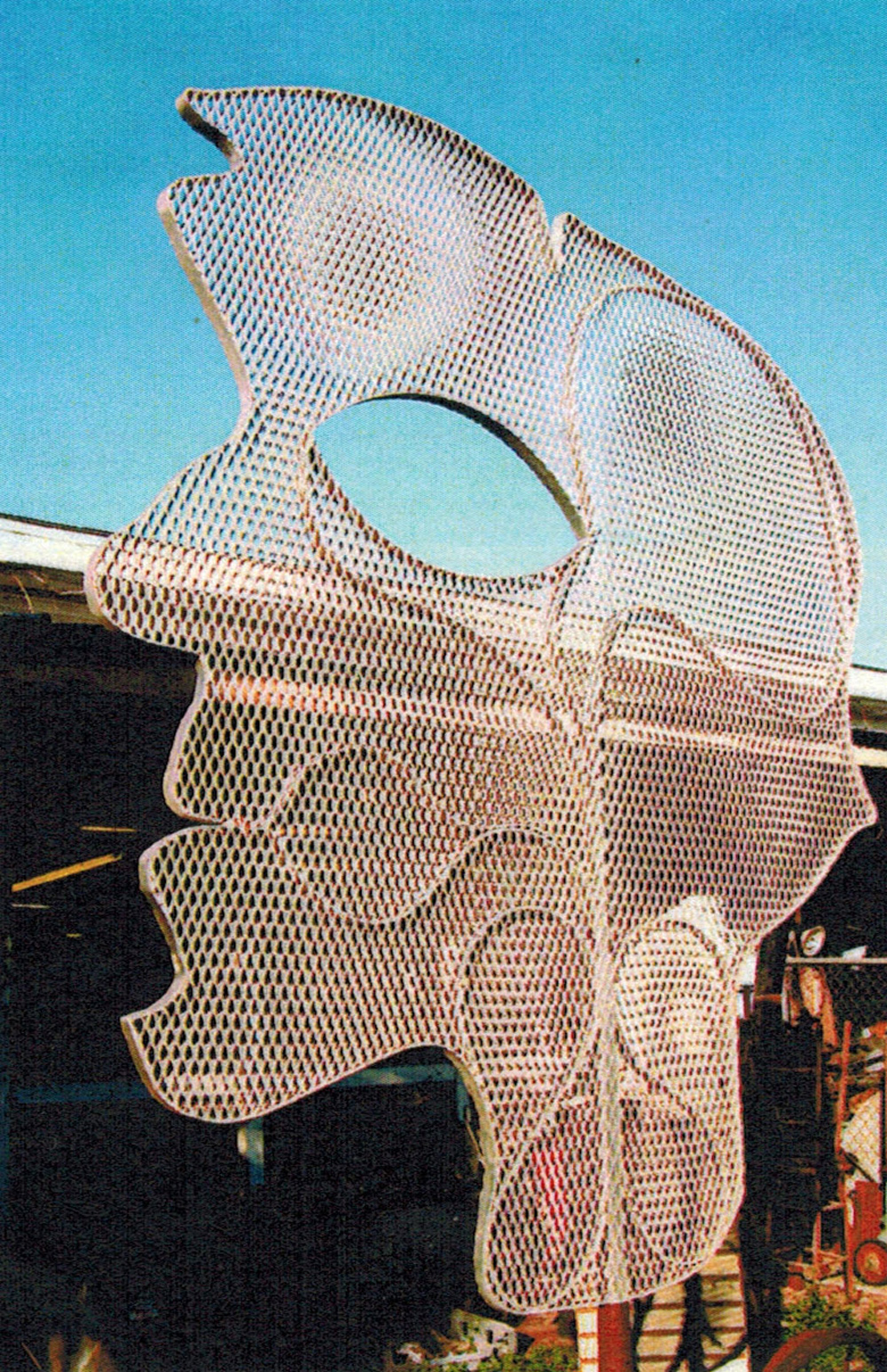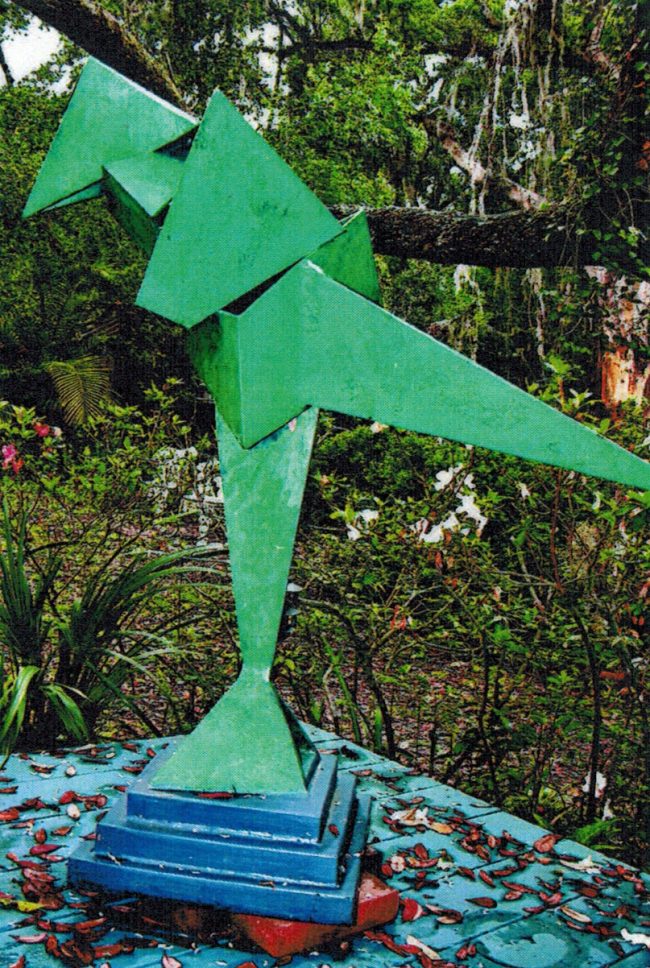
The Palm Coast City Council on Tuesday approved imposing a 0.5 percent fee on all commercial projects in the city with a value of $1 million or more. The city will use parts of the money to fund its long-standing cultural arts grants, but it’s unclear how else it will use the money. It would largely be the purview of the city’s Parks and Recreation Department, with a more specific policy to come to set out spending and installation criteria.
There were 26 commercial projects exceeding $1 million each between October 2023 and October 2024, ranging from a $1 million project to a $47 million project. Those would have generated $235,000 for the public art fund. In the last two years, projects totaled $138 million, which would have yielded $693,000. The fee will be required of developments and re-developments of commercial projects only.
In the proposal Parks and Recreation Director James Hirst submitted to the council, the revenue generated from any single project would be capped at $250,000. In other words, if a project exceeds $50 million, it would not pay more than the $250,000 that $50 million generates. The Palm Coast administration followed the Sarasota arts-in-public-places program.
Hirst’s proposal also called for a city committee to be established, and for an allowance for developers to install their own art, in line with the value of their development, as long as it was approved by the city committee and, ultimately, by th council. Council members killed both those provisions. There is to be no committee. There is to be no allowance for private developers or property owners to replace the required fee with art of their own. Those private entities may install any art they please on their property, but not in place of paying the fee. And what art thy would install would not have to be vetted by the city.
Council member Charles Gambaro did not want the arts committee (and presumably the council) to have veto power over an arts installation on private commercial property that it would deem “offensive.” He gave as an example a imagined defense contractor building a project in Palm Coast and wanting to install a World War II mural or “print” that would somehow be found “offensive.” He was also opposed to a provision that made a city’s certificate of occupancy contingent on fulfillment of a developer’s arts obligations (though such conditions apply to other requirements as well, and the proposed ordinance included a provision allowing for extensions). “These provisions, for me, it’s an example of shooting ourselves in the foot when we’re trying to bring people here,” Gambaro said.
Council member Ed Danko went further: ” I hate to tell any property owner they have to put anything on their property whatsoever,” he said, especially when a government committee was behind the judgment of what would be installed. “The other concern I have is right now, we start with a certain percentage, at what point does that increase, and how high does it go? Because it could increase over time.”
Council member Theresa Pontieri proposed doing away with the allowance for companies to install their own art instead of paying the fee, which made all of Danko’s and Gambaro’s concerns moot. But it also clouded the breadth of the program, because now it’s not clear who will decide what art goes where, other than the council, and the council will not want to be placed in a position to make those initial determinations. It would only ratify a vetting process. For example, the city’s beautification committee vets and recommends all new installations at heroes Park, which the council then ratifies.
The arts-in-public-places committee would have done the same. But Tuesday’s action appears to have eliminated that committee, leaving the Parks and Recreation to fill in the vagueness–at least for now.
One certainty: the funds will be used to pay for the city’s long-standing cultural arts grants, which provide grants of from $25,000 to $35,000 a year to a dozen or so local cultural organizations.
Five years ago when the late Tom Gargiulo of the Gargiulo Art Foundation spearheaded the installation of Copper Tritscheller’s “Burro With Bird on His Shoulder” in Central Park, the work was to be the first in a series of public sculpture the foundation was sponsoring in conjunction with the city. The next two works were to be sculptures by Harry Messersmith, then a sculpture by Peter Hokanson. At the time, then-Council member Bub Cuff and Mayor Milissa Holland were behind the city’s warmer embrace of public art, which also led to the creation of an arts district in Town Center.

All of that went nowhere as Cuff did not run for another term, Holland resigned, and Gargiulo died, capping a grim couple of years for local arts organizations with the end of the Flagler County Art League, the Palm Coast Arts Foundation and JJ Graham’s Salvo Art Project. The county’s art scene has yet to recover (the Flagler County Cultural Council is an umbrella organization with some coordinating aspirations–it just sponsored the annual arts festival in town center–but it is not a creator of art.) The City Council’s action on Tuesday may be a catalyst for some of that revival, with a dedicated and substantial funding source to that end for the first time in the city’s history.
“I’m absolutely in favor of making a statement and creating a funding source for the arts and culture for the long term,” Mayor David Alfin said. But, as has often been the case with non-Alfin initiatives, there’s a but: “I’m not at all clear or sure that 10 years from now, how is the city going to look more beautiful because of the investment that has been made?” he asked. “In general terms, it’s a little dreamy. It sounds good and all of that. I’m concerned about execution and the process, and how even individual projects get approved, and these monies get accounted for.”
Hirst had just outlined precisely how the money would be accounted for, and what the process would be for art installations. He understood how the money would be collected. But he called the rest of the process “lame. It doesn’t tell me what, what we’re going to get on the other end,” he said, as if wanting to know now what art works that have yet to be created, by artists that have yet to be named, installed in places that have yet to be built, would look like.
“I’m not certain what the city of Palm Coast is going to look like in 10 years,” Council member Nick Klufas said, “but I can tell you for sure that the cultural arts funding mechanism for the grant funding is something that can have impacts, tremendously.” various attempts by arts initiatives have been “hamstrung” by a lack of a process or of arts funds in the city, he said.
The council had asked the city to consider a 0.1 percent fee in its calculation. Pontieri was not for that small amount. She considers the 0.5 percent requirement a “drop in the bucket.” She also did not like the idea of leaving it into the city’s hands to pick what art goes where when it involves private property. “It’s almost like the book thing in the schools,” she said, referring to the last few years’ spate of book-banning in public schools, “who chooses the right books and who chooses the wrong books? And I don’t want to get into all that.”
Pontieri would simply have developers pay the fee–the same way they pay development impact fees, though it would not be defined that way–rather than have the option of putting up their own. “We have to continue to enrich our community as well, and we want to do that at the lowest cost to the taxpayer as possible,” Pontieri said. The added fee is “low enough to where it’s not going to deter business,” and will accomplish a goal that has stumped the city for many years.
![]()




























Clark says
Just a waste of money for a pile of scrap welded together. Is it in the Town Center or the Townhouse Center ???
Greg says
Our infrastructure is on the cusp of collapse and this is what they think is important for the City and residents?